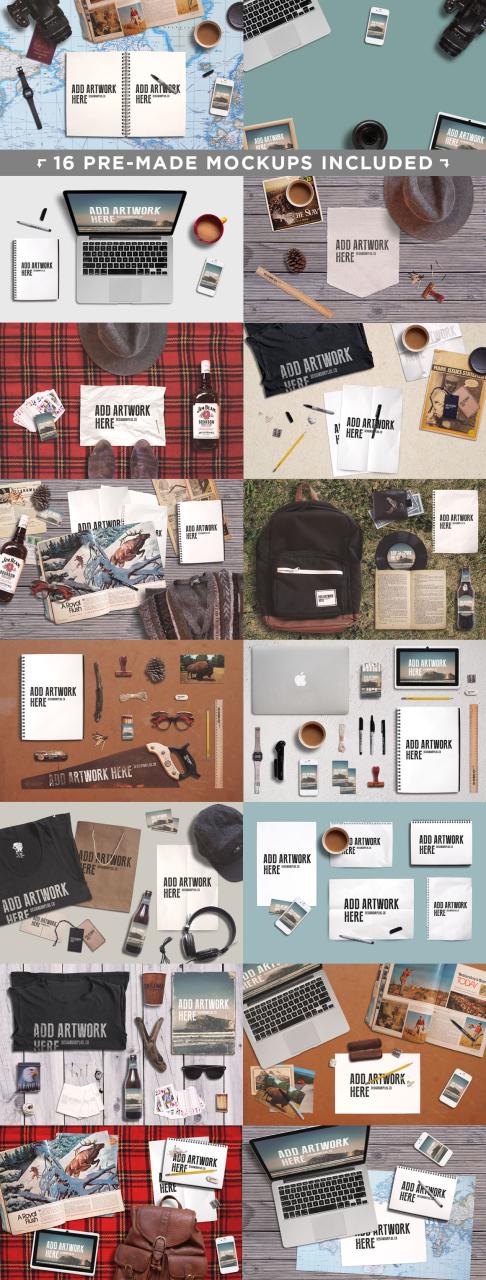Craft Your Own Mockups: A Comprehensive Guide
Introduction
In the realm of product design and marketing, mockups hold immense significance. They serve as visual representations of concepts or ideas, enabling designers and businesses to showcase their products in a realistic setting. Whether it’s a website design, a mobile app interface, or a physical product, mockups provide an invaluable tool for communication, presentation, and marketing purposes.
Traditionally, mockups have been created by professional designers using specialized software. However, with the advent of user-friendly online tools and resources, creating your own mockups has become accessible to everyone. This comprehensive guide will empower you with the knowledge and practical steps required to craft your own high-quality mockups.
Benefits of Creating Your Own Mockups
- Cost-effective: Eliminate the expenses associated with hiring a professional designer or purchasing expensive software.
- Time-efficient: With readily available tools, you can create mockups quickly and conveniently, saving valuable time.
- Customization: Tailor mockups to your specific needs and preferences, incorporating unique elements and branding.
- Enhanced communication: Facilitate clear and effective communication within design teams and with clients by visualizing ideas in a tangible format.
- Better presentation: Showcase your concepts professionally and make a lasting impression on stakeholders.
Step-by-Step Guide to Creating Mockups
Step 1: Gather Your Resources
- High-quality images: Obtain high-resolution images of the product or design you intend to showcase.
- Mockup templates: Utilize online platforms or libraries that offer a wide range of pre-designed mockup templates.
- Software tools: Choose a user-friendly software tool or online editor that supports mockup creation.
Step 2: Select a Mockup Template
Browse through available mockup templates and choose one that aligns with the purpose of your mockup. Consider the context, perspective, and style that best suits your product or design.
Step 3: Import Images
Import your high-quality images into the software tool or online editor. Resize and position the images within the mockup template as desired.
Step 4: Customize the Mockup
Personalize the mockup by adding your own branding elements, such as logos, colors, and typography. Adjust the lighting, shadows, and effects to create a realistic and visually appealing representation.
Step 5: Enhance the Realism
Pay attention to details that enhance the realism of your mockup. Consider adding textures, shadows, and reflections to make it appear as close to the actual product or design as possible.
Step 6: Export the Mockup
Once you are satisfied with the result, export the mockup in the desired file format, such as JPG, PNG, or PDF. Choose a resolution that is suitable for your intended use.
Step 7: Share and Utilize
Share your mockups with stakeholders, clients, or potential customers. Use them in presentations, marketing materials, or social media campaigns to effectively showcase your ideas and products.
Best Practices for Mockup Creation
- Use high-quality images: Crisp and clear images will result in professional-looking mockups.
- Pay attention to lighting and shadows: Realistic lighting and shadows enhance the credibility of your mockups.
- Keep it simple: Avoid cluttering your mockups with unnecessary elements. Focus on highlighting the key features and benefits.
- Consider your audience: Tailor your mockups to the needs and preferences of your target audience.
- Test and refine: Create multiple mockups to explore different perspectives and gather feedback. Iterate and improve them based on user feedback.
FAQ
Q: What is the difference between a wireframe and a mockup?
A: A wireframe is a low-fidelity representation of a design, focusing on the layout and structure. A mockup, on the other hand, is a high-fidelity representation that simulates the actual appearance and functionality of a product or design.
Q: What software tools can I use to create mockups?
A: There are numerous software tools available, including Adobe Photoshop, Figma, Sketch, and Canva.
Q: Where can I find free mockup templates?
A: Various online platforms offer free mockup templates, such as Placeit, Mockupworld, and FreePik.
Q: How can I make my mockups more realistic?
A: Add details such as textures, shadows, and reflections to create a sense of depth and authenticity.
Q: Can I create mockups for any type of product or design?
A: Yes, mockups can be created for a wide range of products and designs, from websites to apps to physical objects.
Conclusion
Creating your own mockups is a valuable skill that empowers you to visualize and showcase your ideas in a professional and impactful manner. By following the steps outlined in this guide and adhering to best practices, you can produce high-quality mockups that will effectively communicate your concepts and enhance your presentations. Remember to continuously seek inspiration and explore new techniques to refine your mockup-making abilities.
